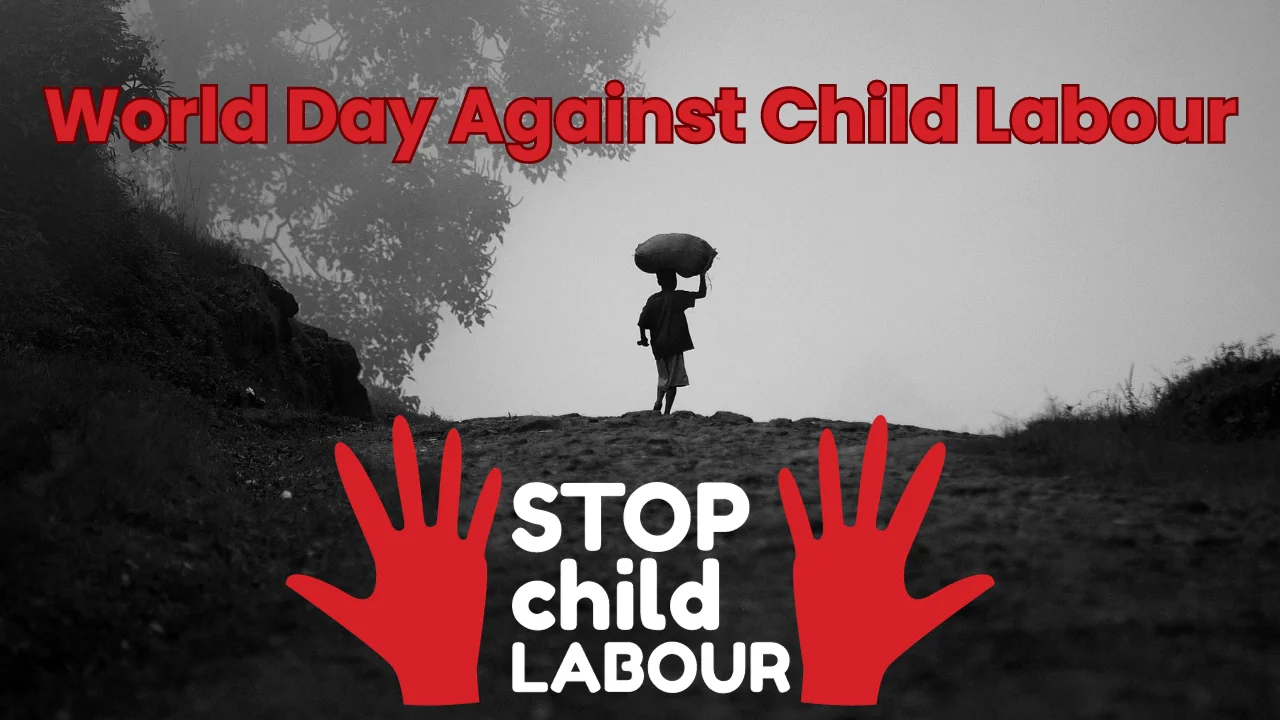Child labor refers to the employment of children in any work that deprives them of their childhood, interferes with their ability to attend regular school, and is mentally, physically, socially, or morally harmful. It’s a significant issue globally, with millions of children being exploited in various industries, often under hazardous conditions and for very low pay.
This year’s World Day Against Child Labour, on June 12, 2024, focuses on the theme “Let’s act on our commitments: End Child Labour!” This day celebrates the 25th anniversary of the Worst Forms of Child Labour Convention (1999, No. 182).
World Day Against Child Labour is a poignant reminder of the global challenge of child labour and the imperative to address it comprehensively. Observed annually on June 12th since its inception by the International Labour Organization (ILO) in 2002, this day serves as a rallying point for governments, organizations, and individuals to renew their commitment to ending child labour in all its forms.
Child labour persists as a grave violation of children’s rights and a barrier to their development, depriving them of their childhood, education, and health. According to the ILO, there are an estimated 152 million children worldwide engaged in child labour, with nearly half of them engaged in hazardous work. These children are often subjected to exploitation, abuse, and dangerous working conditions, perpetuating a cycle of poverty and inequality.
According to reports by the International Labour Organization in 2016, Nine percent of African children are in hazardous work, again highest of all the world’s regions.
Africa has the largest number of child labourers; 72.1 million African children are estimated to be in child labour and 31.5 million in hazardous work.
Progress against child labour appears to have stalled in Africa. Child
A new report from the National Bureau of Statistics (NBS) has disclosed the state of child labour across Nigeria. The report indicates that over 24 million Nigerian children are involved in child labour, with 14.3 millions of these children engaged in hazardous work as of 2022.
The northwest geopolitical zone bears the brunt of these figures, with the highest number of child labourers (6,407,102) and children in hazardous work (3,266,728). Yet, when it comes to the percentage prevalence of child labour, the southeast region emerges as the most affected, with nearly half of the children involved in child labour at 49.9%.
Nationally, 39.2% of children (24,673,485) are in child labour, and 22.9% (14,390,353) are involved in hazardous work, painting a grim picture of the conditions under which nearly two out of every five Nigerian children live.
The World Day Against Child Labour aims to shed light on the root causes of child labour and mobilize efforts to eliminate it. Poverty, lack of access to quality education, inadequate legal protections, and societal attitudes towards child work are among the complex factors driving this phenomenon. Addressing these underlying issues requires a multi-faceted approach that involves governments, employers, civil society, and communities working together.
Key strategies for combating child labour include:
1. Strengthening legal frameworks: Governments play a crucial role in enacting and enforcing laws that prohibit child labour and protect children’s rights. These laws should align with international standards set forth in conventions such as the United Nations Convention on the Rights of the Child (UNCRC) and ILO conventions.
2. Promoting education: Education is a powerful tool for breaking the cycle of poverty and preventing child labour. Access to quality education, including free and compulsory schooling, ensures that children have viable alternatives to exploitative labour.
3. Poverty alleviation: Poverty is both a cause and consequence of child labour. Addressing the root causes of poverty through social protection programs, economic empowerment initiatives, and sustainable development efforts can help reduce reliance on child labour as a means of survival.
4. Creating decent work for adults: By promoting decent work opportunities for adults, including fair wages, safe working conditions, and social protection, families are less likely to rely on child labour as a source of income.
5. Raising awareness and advocacy: Continued advocacy efforts are essential for raising awareness about the harms of child labour and mobilizing support for its eradication. Campaigns, public awareness events, and community outreach initiatives can help change attitudes and behaviours towards child labour.
6. Strengthening partnerships: Collaboration between governments, employers, trade unions, civil society organizations, and international bodies is crucial for designing and implementing effective strategies to combat child labour. Partnerships can leverage resources, expertise, and collective action to achieve greater impact.
Finally, On World Day Against Child Labour, various events, campaigns, and initiatives are organized around the world to raise awareness, promote dialogue, and galvanize action. These efforts are essential for building momentum towards the goal of a world where every child can enjoy their fundamental rights, including the right to a childhood free from exploitation and labour.










